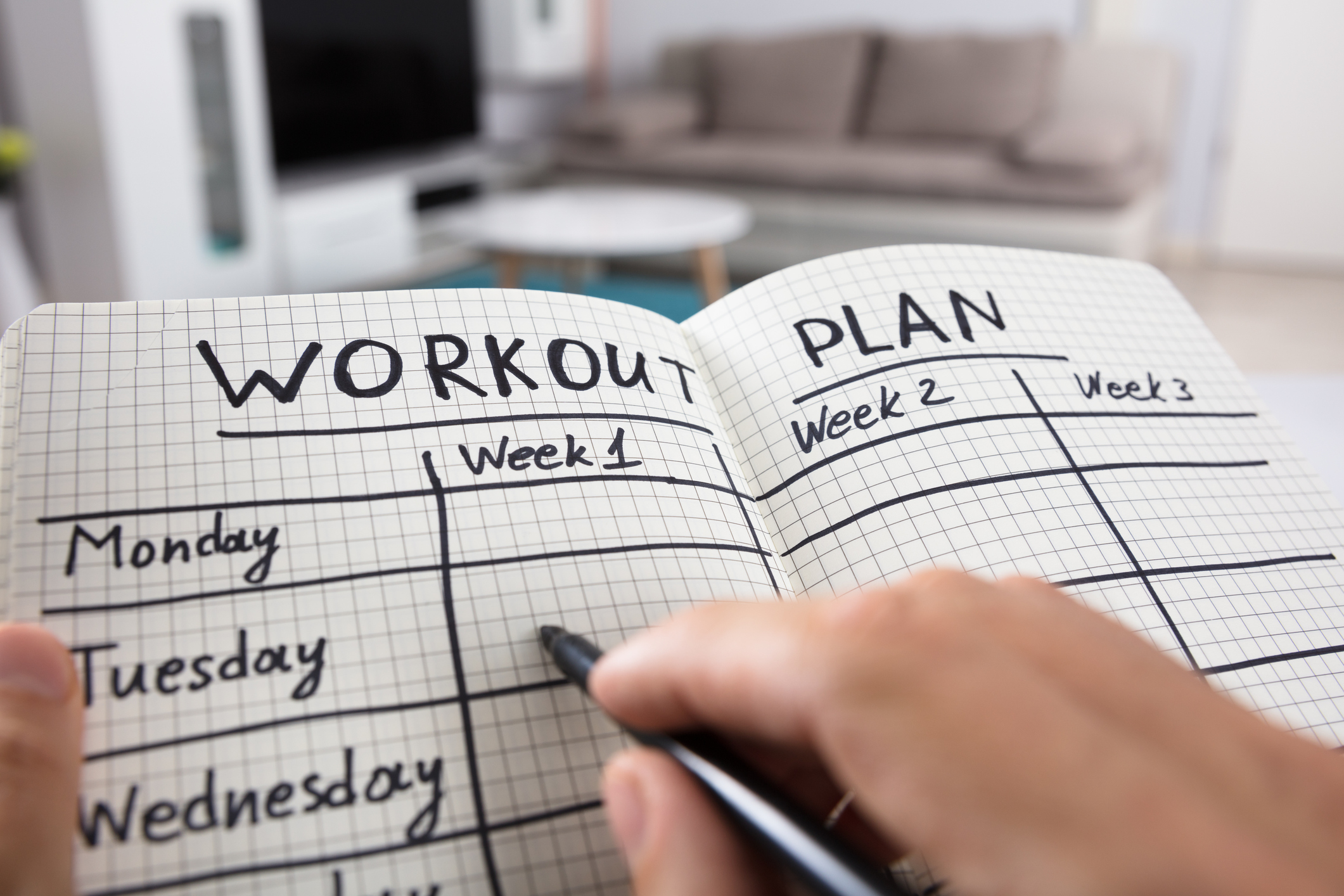
April 1, 2020, by Kate Rothery
Creating your home workout plan: UoN Sport’s top tips
Our daily routines have all dramatically changed over the last few weeks as we adjust to life during the Coronavirus pandemic and the vital social distancing measures this necessitates.
The team at University of Nottingham Sport are on hand to ensure that you can continue to stay active from the comfort of your own home thanks to our new online Health and Wellbeing Home.
As part of our blog series, Cam and John from the University of Nottingham Sport fitness team have put together their advice for creating an effective and enjoyable home work out plan.
A self-professed morning person, Cam’s schedule is to get up and go early and use HIIT style workouts to push himself with body weight exercises. John’s making the most of his garden and the lunchtime sunshine to fit his exercise routine in. At home, his favourite workout is a mixture of TRX suspension training and Kettlebell exercises.
Check out their top tips for planning a home workout below.
1. Decide on your personal goals
Think about what you want to achieve and what your end goal is going to be. Whether you want to lose weight, tone up or build muscle mass, the first step is to set out your personal goals.
Why not grab a blank notepad and keep this for noting down what your workout goals? This will really help you to remain focussed.
2. Set a realistic schedule
Your plan should be realistic and achievable for you. Balancing time spent working out with everything else you need to get done – studying, working, home schooling (the list goes on!) – is really important to keep you motivated and on track.
We recommend figuring out how much time you’ll spend working out and put it into your weekly schedule. An hour a day is ideal, but we appreciate not everyone has the luxury of this much “me time”; 20 minutes when you can fit it in will work just as well!
3. Get your exercise space ready
Having a safe space to exercise will make your workouts more enjoyable and effective and ensure you’re meeting all the current social distancing guidelines.
At home, make sure you have enough clear space, including the floor, to make movements safely. You may want to set up in front of the TV so you can stream online workouts to follow. If you’re lucky enough to have a garden, then this could be a perfect spot.
4. Include a warm up and cool down
It might seem obvious, but ensuring that all your workouts at home include a warm up and cool down will reduce the risk of injury, improve the effectiveness of your main workout and improve your recovery post-workout.
5. Use the FITT principle to set your routine
You can structure your programme by four key principles – FITT.
Frequency – How many times do you want to train per week? For example, if you want to focus on improving your leg strength/mass, you should aim to include leg exercises in your programme at least 3 times a week.
Intensity – How hard are you working? Monitoring intensity can be difficult, but the RPE (Rate of Perceived Exertion) scale is probably the easiest way – imagine a scale between 1 and 10 with 1 being no difficulty at all and 10 being extremely difficult/strenuous. Other methods include heart rate monitoring or when performing resistance exercises, the “burn” in the muscles is a good indicator that you’re working hard enough.
Type – What sort of exercises are you putting in your workout? For example, this could be a combination of strengthening exercises, mobility/stretches, plyometrics, cardio and stability/balance.
Time – To improve your cardiovascular fitness you should either aim to exercise continuously for at least 30 minutes at a low-moderate intensity or consider a HIIT approach, where you exercise at a high intensity for short bursts of time interspersed with rest periods. When it comes to resistance training, the time spent exercising is more commonly measured as the number of “sets” and “reps”, for example – squats – 3 sets of 15 reps.
6. Pick a routine, but don’t be afraid to change it up
If your workouts are beginning to feel like a grind inject a little variety. Whether it’s changing the route of your run or alternating rep schemes, there are lots of ways to avoid repetition. By adding new features to your plan you’ll also be working different sets of muscles and joints, so the risk of injury is minimised.
7. Make the most of the online support available
Our new online Health and Wellbeing Home has a huge wealth of resources to support you at home.
There’s a huge bank of workout videos from our partners LES MILLS, Shreddy and Life Fitness as well as the UoN Sport team. Why not join in our weekly challenges or our live #WednesdayWorkout as part of your home workout routine?
For our UoN sport and fitness members, our fitness team are offering personalised advice on your home workouts. If you’d like support on setting goals or creating a plan from home, please get in touch with James Nee at james.nee@nottingham.ac.uk for more information.

Great! Like your blog